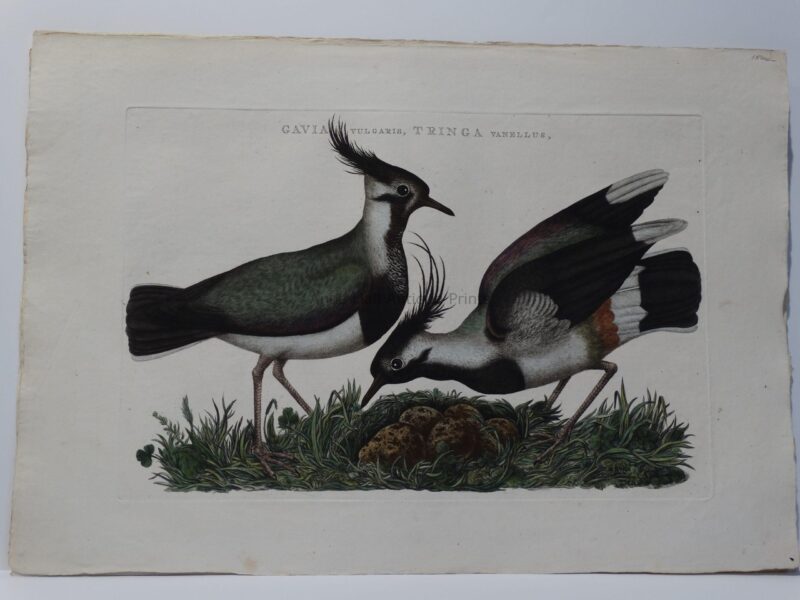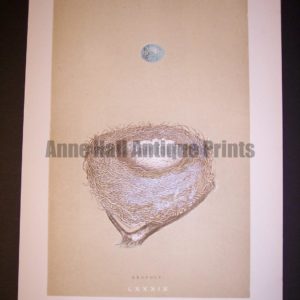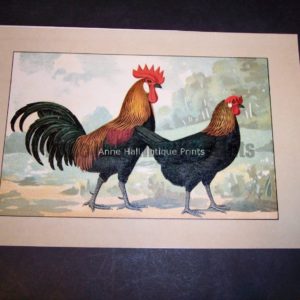Description
This Nozeman Bird Prints Gavia Tringa Lapwings is a Dutch antique ornithology engraving from Nederlandsche Vogelen 1770-1829 which took an astounding 59 years to complete.
These Rare Antique Bird Engravings took an amazing 59 years to publish!
These magnificent antique bird engravings from Nederlandsche Vogelen which translates to the “Birds of the Netherlands.” This Nozeman Bird Prints Gavia Tringa Lapwings, is the work of Cornelius Nozeman, Christian Sepp and Martinus Houttyn. Commonly referred to as “Nozeman Birds.” These authentic antique prints were published from 1779-1820. It took an amazing 59 years to complete this laborious work on Birds of the Netherlands. During that period, the Dutch colonized areas all over the world, so birds seen in those areas were included as well. These magnificent antiques are hand colored copper plate engravings which were printed onto hand made, hand laid rag paper and furthermore illuminated after printing.
Authors of Nederlandsche Vogelen:
Cornelius Nozeman (1721-1786) was a Dutch minister and ornithologist and wrote the text for the first two volumes.
Martinus Houttuyn -1798) little is known about this contributor.
Christian Sepp -1775) was a world know engraver and artist. His plates were etched & engraved by himself.
Jan Christian Sepp was the son of Christian, a naturalist, engraver and bookseller who finalized the work in 1829.
18th century craftsmen published Nederlandsche Vogelen.
Crafting this Nozeman Bird Prints Gavia Tringa Lapwings
in the 18th Century:
A laborious craft of all those involved in producing something like these magnificent Nozeman bird prints. First, to find, acquire and identify the species. Second… the illustrations had to be meticulously drawn, with only the best accuracy would do to be successful in the world of 18th Century publishing.
The paper was hard to acquire. Just making paper during the 18th Century required tremendous skill. A learned lifetime craft. Paper was made of rag right up through the turn of the 20th Century. Coming from linen, flax, etc, NOT TREES, there was no acid in the paper. Very expensive to acquire, inconsistent, etc. but has the ability to survive many Centuries.
LATER the image would be transferred onto a copper plate and engraved with burins, another life skill. The engraver would have to re engrave another plate after just 300 strikes. Then there was illumination. Water colorists would die at young ages, due to licking tips of their paint brushes.
Popularity of publications depended on how many sets or subscriptions the publisher could sell. Perhaps a set like these rare bird engravings would only be acquired by the wealthiest universities, clergy, noblemen, doctors and solicitors.
See more Nozeman https://annehallantiqueprints.com/nozeman-bird-prints/ Call Anne at 413-245-4197 to receive personalized service us about this Nozeman Bird Prints Gavia Tringa Lapwings and other Nederlandsche Vogelen antique bird engravings.






